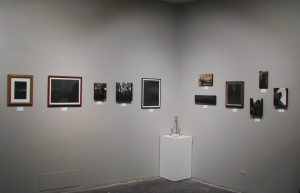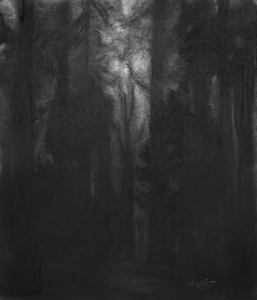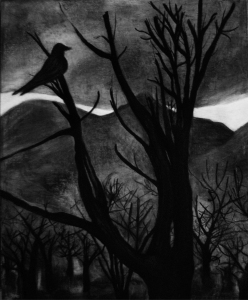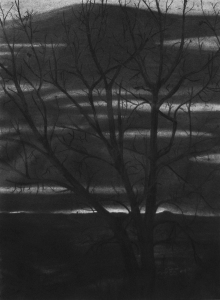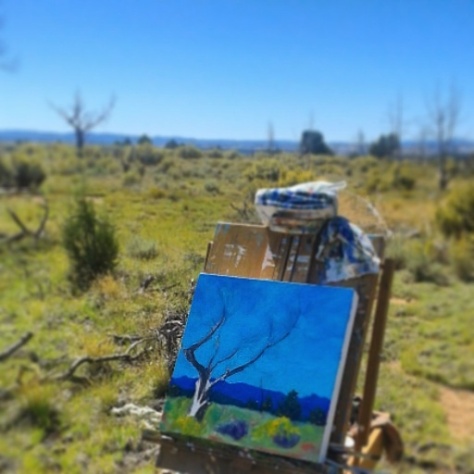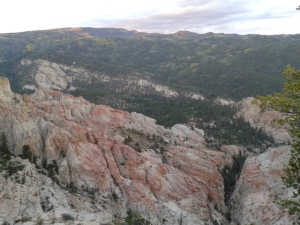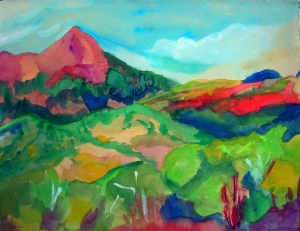
Pondering the life and death of trees, en plein air. Burr Trail, Utah, 09/22/14
Today was my fourth straight day of painting in the Grand Staircase-Escalante National Monument for the Escalante Canyons Art Festival & plein air competition. I’ve been putting in at least eight hours a day, painting in different spots under different weather conditions. The whole area is full of amazing scenery, so finding a spot to paint really isn’t difficult. What is difficult is finding one that’s close to a parking place (so I don’t have to carry my gear too far to get the scene I want), but also being in an isolated enough spot so I’m not getting bothered by too many people (I want people to see my work, but not always while I’m working on it).
Today, I painted along Burr Trail Road, a narrow road that is paved as it winds through the monument, but becomes unpaved when you get to the southern portion of Capitol Reef National Park. In the interest of saving time, I didn’t go too far down the road before finding the perfect spot to paint one of my favorite subjects: ponderosa pines.
Around 3:30 in the afternoon, a couple pulled over by my truck as I was eating my lunch of crackers and kipper snacks. I was hungry, tired, and extremely out of it. A man and woman got out of their truck and the man said to me, “You’ve been out here all day.” I nodded and blinked, trying to wake up my mind to the idea of contact with other humans after spending all day staring at trees and paint and singing to the birds. He introduced himself (I believe his name was David) and his girlfriend Britney. He explained that they had seen me out there that morning as they left their campsite. “You must be a serious artist.” I told him about the festival and competition, attempting some explanation as to why I was painting out there (although I don’t think I need a reason to be painting in this beautiful place). They found out about the festival after they had seen me and some other painters in the area today, and asked around about it. Then, they asked me if they could look at what I was working on (Britney said something about wanting to see how an artist works), and I said, “Of course.” I stayed at my truck eating my lunch, while they walked over to my easel. They came back to me a few minutes later, and complimented me on my work. They loved the way I painted my trees and clouds. I thanked them, and David went on to say, “You’re a great and serious artist. And you’re hardcore. You stand up while you paint! Everyone else sits down.” I blinked. I didn’t know what to say, except thanks. They wished me luck in the competition and drove off.
Before I go on with the rest of my day’s story, I want to explain why I paint standing up:
1. It’s the best way to get the view I want.
2. When I’ve been driving all day looking for a painting spot, I want to stand as much as possible.
3. Sitting while I paint hurts my back, neck and shoulders more than standing.
4. I like to make things extra-hard for myself.
5. I like to dance and sing while I paint.
6. I don’t want to carry a chair to the site where I’m working; I could paint out the back of my truck and sit on the tailgate, but then I wouldn’t get the view I want.
7. I’ve tried sitting on the ground and ants crawled into my pants; the bugs will quickly start to act like you’re just another rock.
Continuing on with the day: About twenty minutes after the couple left, I was done with my lunch and was back at the easel when I noticed, out of the corner of my eye, a van pulling over across the street. I looked over at the van after they sat there for 30 seconds or more, and saw the lady in the driver’s seat taking photos of me with her gawking husband in the passenger seat. I glared at them, thinking it would be nice if they’d get out of their van and ask permission to take my photo. I turned my back to them, and they slowly pulled away. I looked over again, and they were the biggest rubberneckers I’d ever seen! They just stared at me with their necks stretching like giraffes, mouths wide open in disbelief, as if I were some kind of wild animal, or a crazy person standing there naked and dancing. Maybe I should’ve done one of these things: either taken my clothes off to give them a show, or acted like a bear. But to be stared at and photographed like that, it was one of the most uncomfortable things I’ve ever experienced while working. They made me feel like some anomaly, like some weirdo, like some wild creature, like something to be gawked at and not spoken to.
All in all, I had a wonderful day. These two rubberneckers didn’t bring me down. But it did make me want to share this experience with others, and say this: If you see someone doing something awesome like painting outside, and you are curious about it, go up to them and talk to them. Don’t stare and take photos without asking permission. I can’t be more grateful for the first couple, who took the time to get out of their car and talk to me and compliment me on my work, and didn’t treat me like I was a freak. If I wanted to be gawked at, I’d go do something easy, like stripping, to make some easy money and live an easy, boring, gross life. Instead, I do this crazy thing called art. Not everyone understands why I do this, just like I don’t understand why people work desk jobs. But I would rather ask someone who works a desk job about their work than stare at them as they sit in their cubicle. Wouldn’t you?

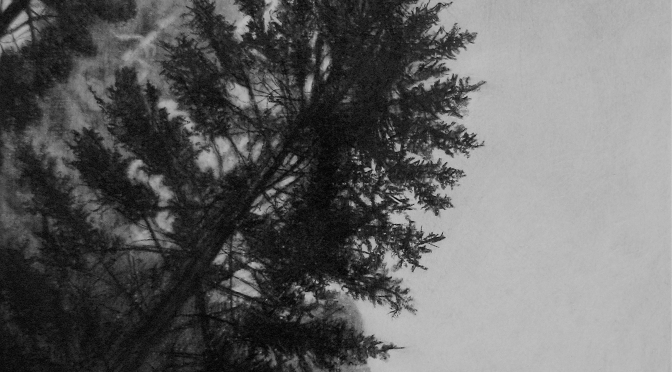
 Meet Me in Montauk, Meg G. Freÿermuth, March 2015, charcoal on panel, 12″ x 12″
Meet Me in Montauk, Meg G. Freÿermuth, March 2015, charcoal on panel, 12″ x 12″